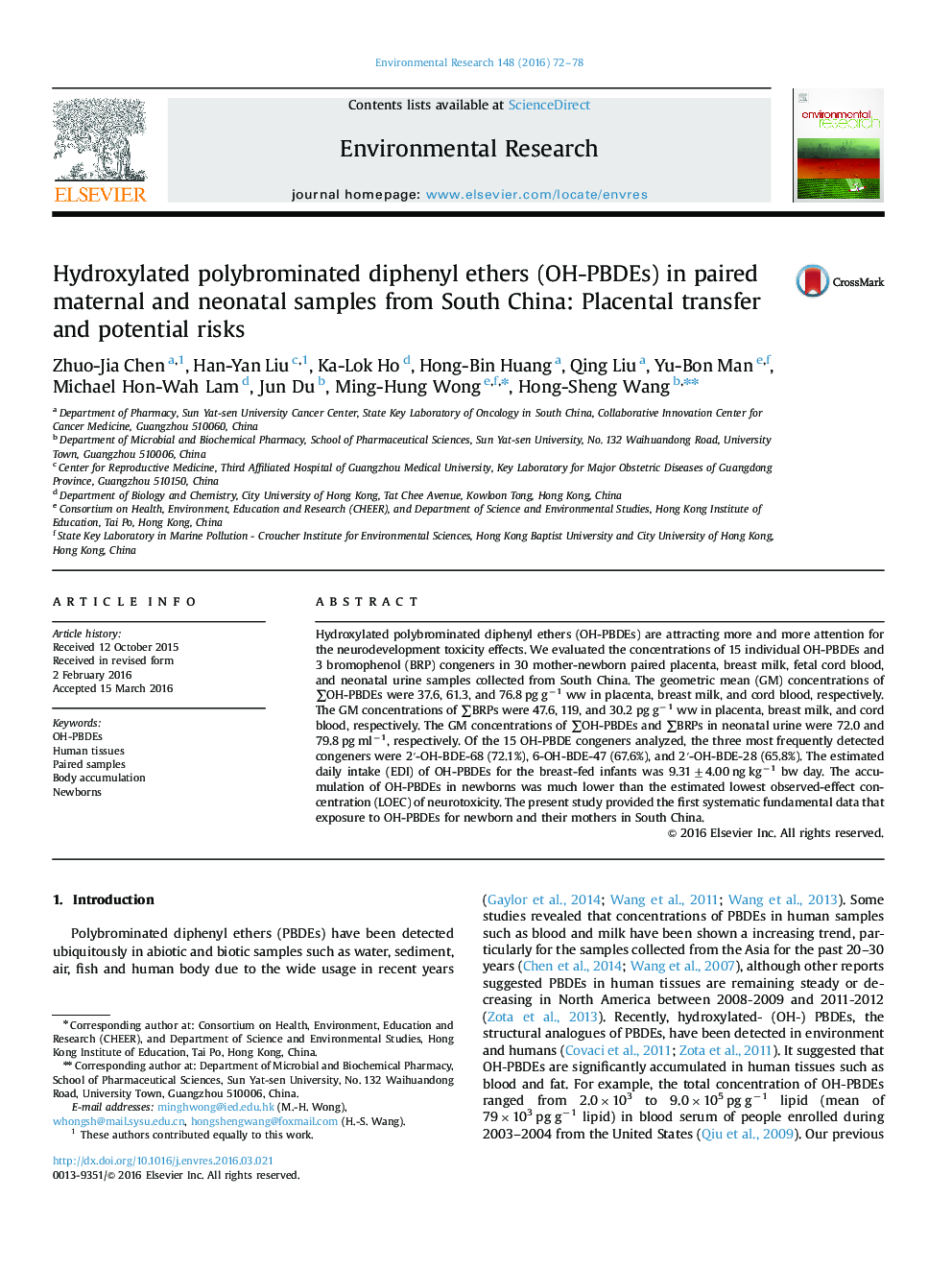| Article ID | Journal | Published Year | Pages | File Type |
|---|---|---|---|---|
| 6351552 | Environmental Research | 2016 | 7 Pages |
Abstract
Hydroxylated polybrominated diphenyl ethers (OH-PBDEs) are attracting more and more attention for the neurodevelopment toxicity effects. We evaluated the concentrations of 15 individual OH-PBDEs and 3 bromophenol (BRP) congeners in 30 mother-newborn paired placenta, breast milk, fetal cord blood, and neonatal urine samples collected from South China. The geometric mean (GM) concentrations of âOH-PBDEs were 37.6, 61.3, and 76.8 pg gâ1 ww in placenta, breast milk, and cord blood, respectively. The GM concentrations of âBRPs were 47.6, 119, and 30.2 pg gâ1 ww in placenta, breast milk, and cord blood, respectively. The GM concentrations of âOH-PBDEs and âBRPs in neonatal urine were 72.0 and 79.8 pg mlâ1, respectively. Of the 15 OH-PBDE congeners analyzed, the three most frequently detected congeners were 2â²-OH-BDE-68 (72.1%), 6-OH-BDE-47 (67.6%), and 2â²-OH-BDE-28 (65.8%). The estimated daily intake (EDI) of OH-PBDEs for the breast-fed infants was 9.31±4.00 ng kgâ1 bw day. The accumulation of OH-PBDEs in newborns was much lower than the estimated lowest observed-effect concentration (LOEC) of neurotoxicity. The present study provided the first systematic fundamental data that exposure to OH-PBDEs for newborn and their mothers in South China.
Related Topics
Life Sciences
Environmental Science
Health, Toxicology and Mutagenesis
Authors
Zhuo-Jia Chen, Han-Yan Liu, Ka-Lok Ho, Hong-Bin Huang, Qing Liu, Yu-Bon Man, Michael Hon-Wah Lam, Jun Du, Ming-Hung Wong, Hong-Sheng Wang,
